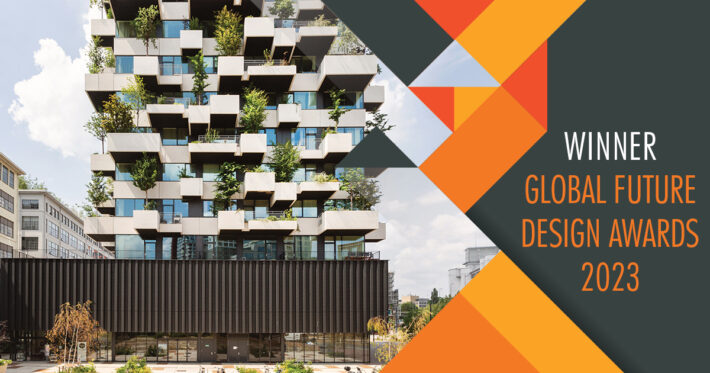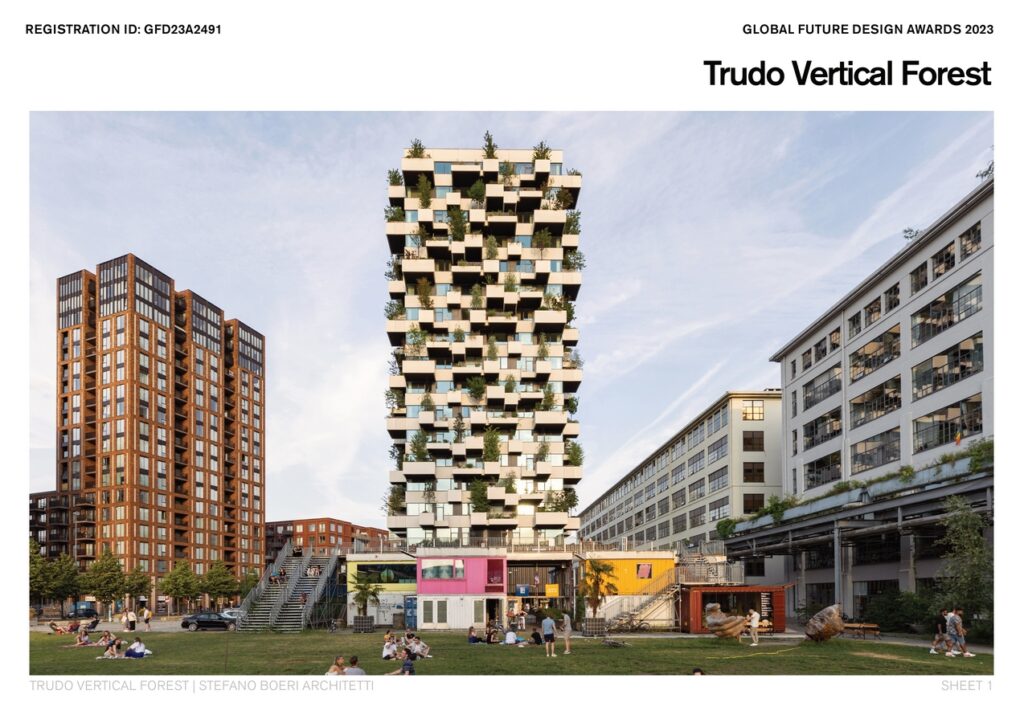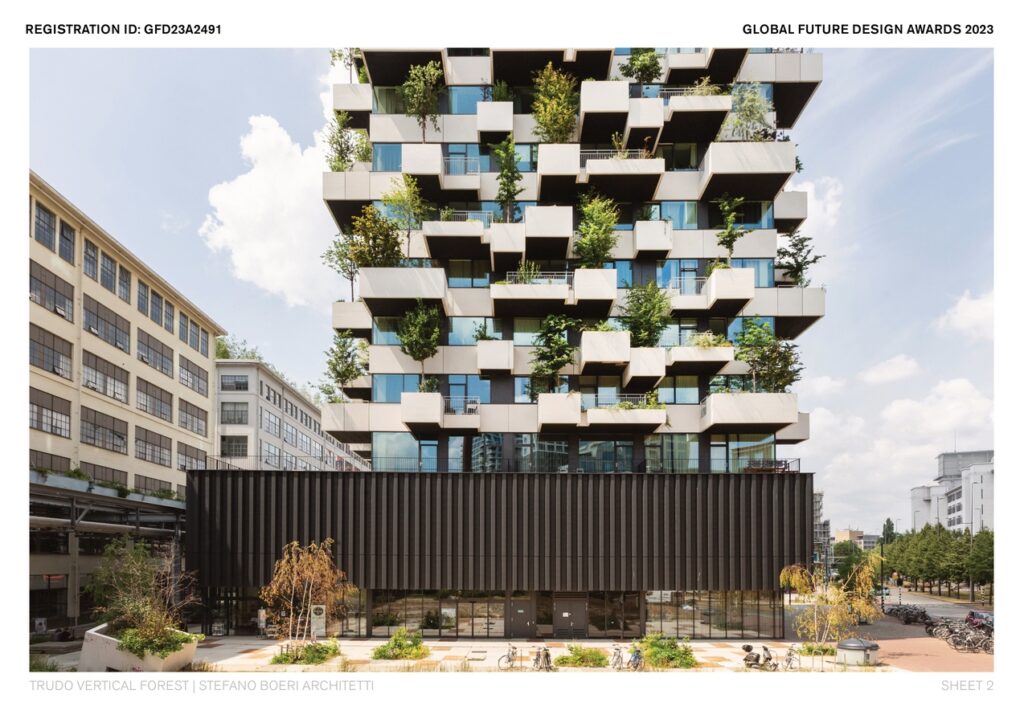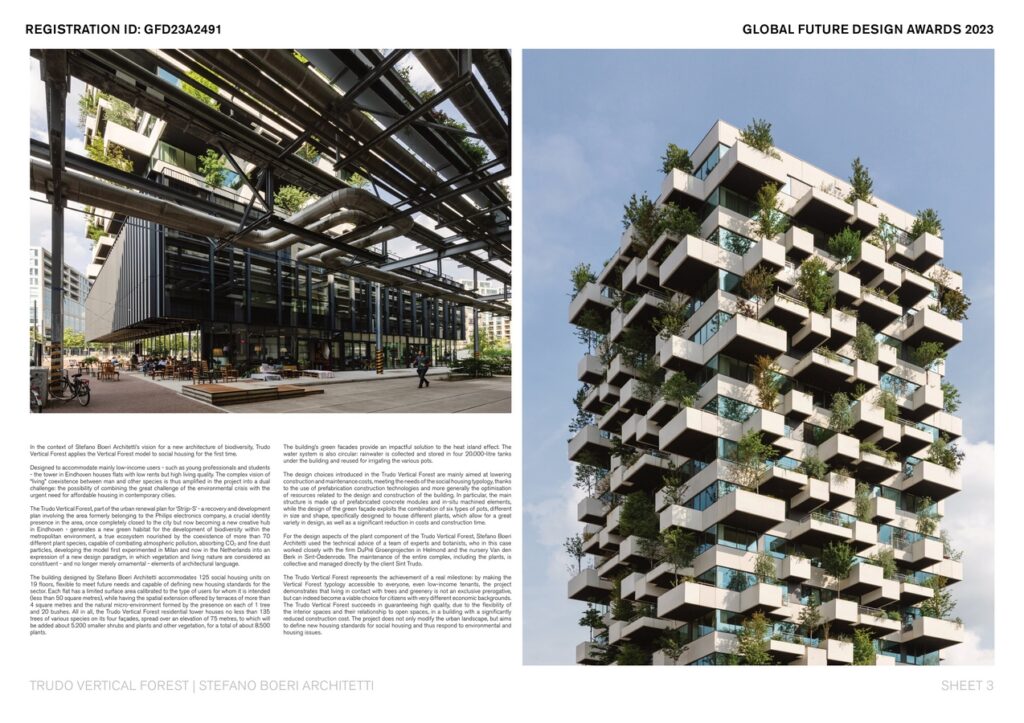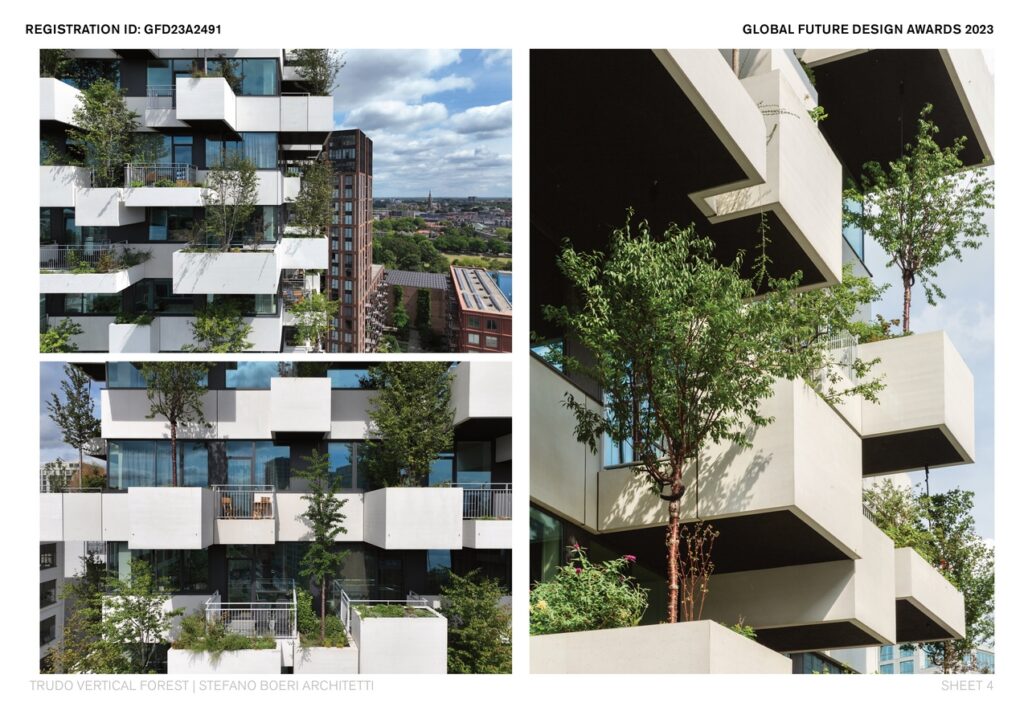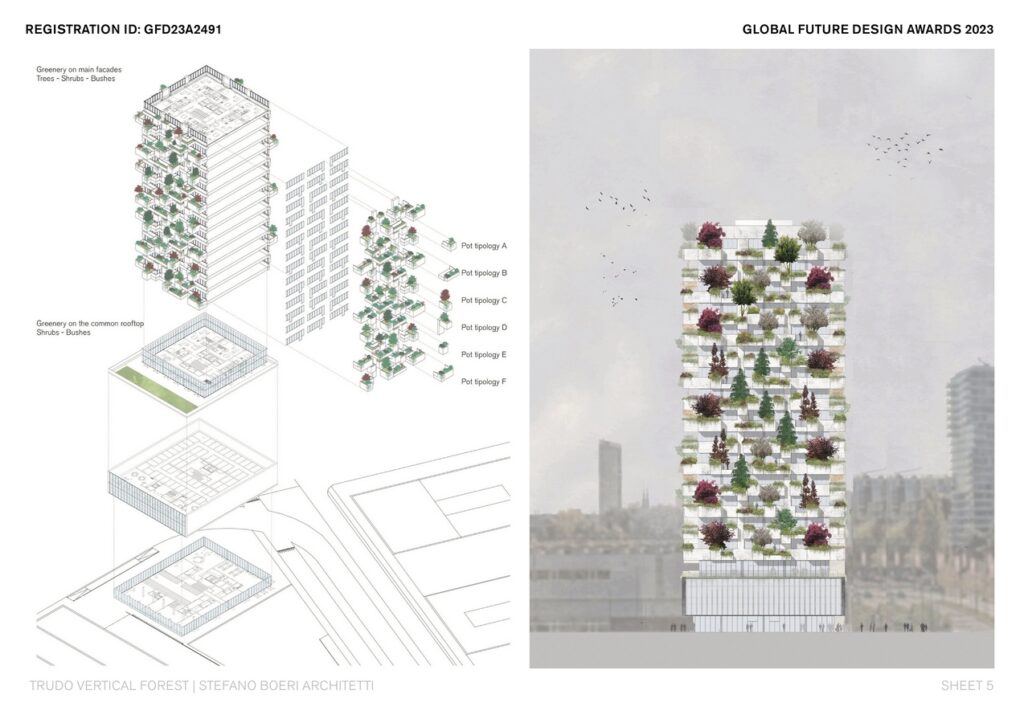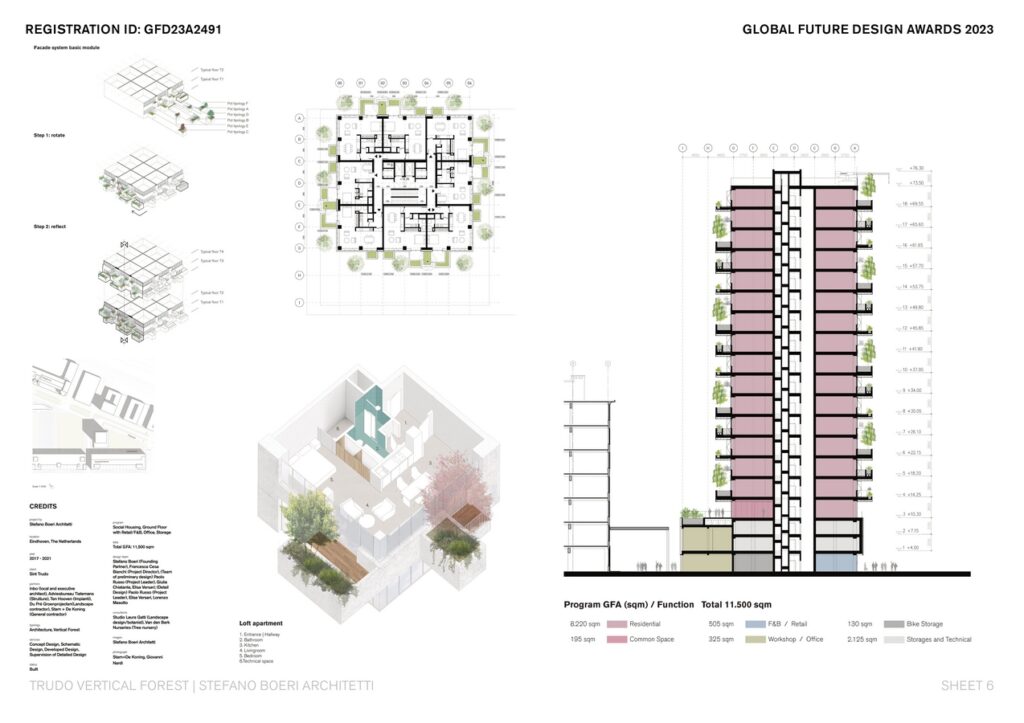In the context of Stefano Boeri Architetti‘s vision for a new architecture of biodiversity, Trudo Vertical Forest applies the Vertical Forest model to social housing for the first time.
Global Future Design Awards 2024: Entries Open!
Take your work to the next level. Register Now…
Gold 🏆 Winner
Global Future Design Awards 2023
Trudo Vertical Forest
Residential Architecture (Built)
Firm
Stefano Boeri Architetti
Architect/Designer
Stefano Boeri
Design Team
Partners: Inbo (local and executive architect), Adviesbureau Tielemans (Strutture), Ten Hooven (Impianti), Du Pré Groenprojecten(Landscape contractor), Stam + De Koning (General contractor); Design team: Stefano Boeri (Founding Partner), Francesca Cesa Bianchi (Project Director), Paolo Russo (Project Leader), Giulia Chiatante, Elisa Versari, Lorenzo Masotto
Project Location
Eindhoven
Country
Netherlands
Photographer/Copyright
©Paolo Rosselli, Stam+De Koning
Social Media Handles
Facebook: N/A
YouTube: N/A
Instagram: N/A
Twitter: N/A
Website URL
N/A
Designed to accommodate mainly low-income users – such as young professionals and students – the tower in Eindhoven houses flats with low rents but high living quality. The complex vision of “living” coexistence between man and other species is thus amplified in the project into a dual challenge: the possibility of combining the great challenge of the environmental crisis with the urgent need for affordable housing in contemporary cities.
The Trudo tower, part of the urban renewal plan for ‘Strijp-S’ – a recovery and development plan involving the area formerly belonging to the Philips electronics company, a crucial identity presence in the area, once completely closed to the city but now becoming a new creative hub in Eindhoven – generates a new green habitat for the development of biodiversity within the metropolitan environment, a true ecosystem nourished by the coexistence of more than 70 different plant species, capable of combating atmospheric pollution, absorbing CO2 and fine dust particles, developing the model first experimented in Milan and now in the Netherlands into an expression of a new design paradigm, in which vegetation and living nature are considered as constituent – and no longer merely ornamental – elements of architectural language.
The building designed by Stefano Boeri Architetti accommodates 125 social housing units on 19 floors, flexible to meet future needs and capable of defining new housing standards for the sector. Each flat has a limited surface area calibrated to the type of users for whom it is intended (less than 50 square meters), while having the spatial extension offered by terraces of more than 4 square meters and the natural micro-environment formed by the presence on each of 1 tree and 20 bushes. All in all, the residential tower houses no less than 135 trees of various species on its four façades, spread over an elevation of 75 meters, to which is added about 5.200 smaller shrubs and plants and other vegetation, for a total of about 8.500 plants.
The building’s green facades provide an impactful solution to the heat island effect. The water system is also circular: rainwater is collected and stored in four 20.000-litre tanks under the building and reused for irrigating the various pots.
The design choices introduced in the Trudo Vertical Forest are mainly aimed at lowering construction and maintenance costs, meeting the needs of the social housing typology, thanks to the use of prefabrication construction technologies and more generally the optimization of resources related to the design and construction of the building. In particular, the main structure is made up of prefabricated concrete modules and in-situ machined elements, while the design of the green façade exploits the combination of six types of pots, different in size and shape, specifically designed to house different plants, which allow for a great variety in design, as well as a significant reduction in costs and construction time.


